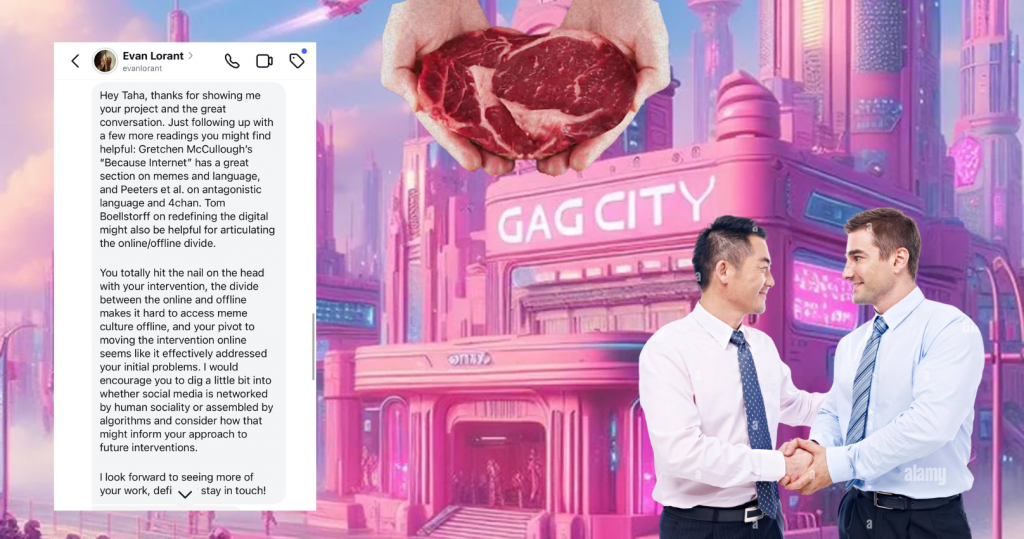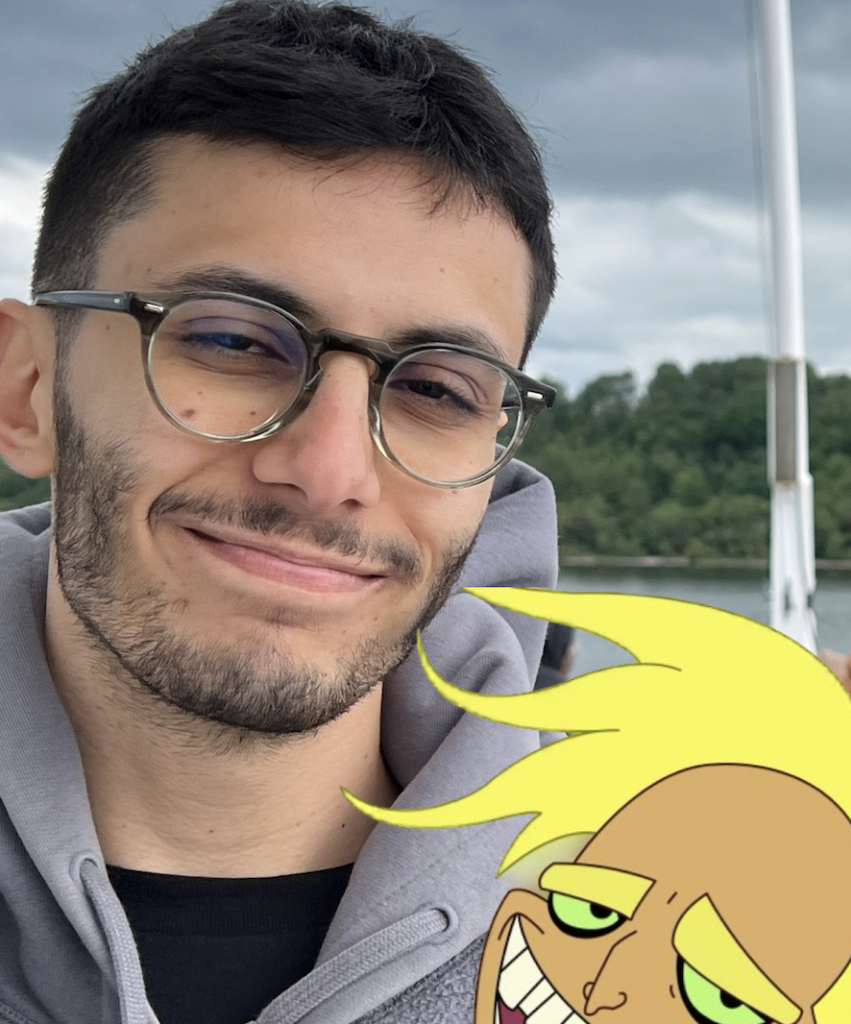
As my research and project evolved, so did my research question. I began with a broader question of: “How can memes as a form of contemporary digital art contribute to cultural experiences and relationships?” However, through the intervention and further research, I’ve evolved it into something more specific: “How can niche meme styles and culturally coded visuals act as a language for identity and connection in digital Gen Z spaces?” This evolution reflects a greater emphasis on the communicative power of memes and navigating online identity.
As part of my research into how niche meme styles and culturally coded visuals act as a language of identity and connection among Gen Z, I contacted Evan Lorent, an MSc student in Digital Anthropology at University College London His Bachelor thesis, The Gag City Grammar Police: Language and Algorithmic Community on Stan Twitter, explores online language, meme culture, and the communities that form around them, making Evan a relevant expert stakeholder for my project. While the subject of our topics differs, the core of both our works sits at the intersection of language, digital identity, Gen Z and subculture.
When our meet-up began, one of Evan’s first points was about how AI is beginning to shape how we communicate. There’s a growing relationship between human expression and machine-generated content, especially within meme spaces. He pointed out how users are intentionally changing how they speak online to “prove” they’re human. Evan explained how AI isn’t necessarily rejected in meme communities, but rather, these spaces embrace the weird, imperfect, and experimental nature of digital content, even if it’s made by a machine. That aligns with how memes are iterated, exchanged and altered in intentionally imperfect ways.
Evan also referenced Richard Dawkins’ original idea of memes as units of cultural transmission similar to genes. But what happens when these memes mutate within chaotic and informal online spaces? That mutation through misinterpretation, iterations, and subcultural layering is how meme-based communities are created. Evan described memes as a networked form of communication so dense that outsiders can’t always follow along. The feed I’ve curated on @ihate_abba functions this way; it is full of visuals that only make sense if you’re informed of the references.
Evan and I also discussed the difficulty of researching meme culture through traditional methods quantitative and qualitative methods. Evan reminded me that online subcultures don’t behave like regular academic categories as they are deeply context-dependent. This supports the point that Marcel Danesi, author of Memes and the future of pop culture, states, “Online culture is difficult to include in any systematic critical analysis, in the traditional sense, of genres, celebrity structure (which tends to be a short-lived), since it unfolds on a different technological platform and in a virtual space (cyberspace); it can mean something different to every person, thus shattering its previous habitus constitution.” (2019, p.34)
Looking back on my first intervention, where I asked people to send me memes in person and got very little response, Evan affirmed that I had hit on a cultural tension. Memes exist in a highly networked digital space, and attempting to translate them into offline settings can feel off. He encouraged me to explore the online and offline divide further and to question whether platforms are networked purely by human intention or shaped by algorithms.
Finally, Evan shared some helpful resources with me, including Because Internet by Gretchen McCulloch, which explores memes through the lens of digital language. The conversation with Evan was affirming and guided me in exploring the emotional, aesthetic, and social layers of how Gen Z uses memes.
References:
Danesi, M. (2019) Memes and the future of pop culture. Boston : Brill
Lorent, E. (2024) The Gag City Grammar Police: Language and Algorithmic Community on Stan Twitter. Sociology Honours Thesis. Dalhousie University. Available at: https://dalspace.library.dal.ca/items/45de88aa-72bc-472e-b87a-dfebd87544e3 (Accessed: 20 April 2025)
